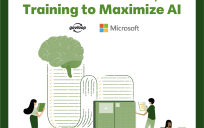Oracle recently hosted the Oracle Public Sector Virtual Summit which included several presentations, online chat discussions and virtual exhibits focused on helping public sector organizations optimize service delivery in a more efficient, cost-effective manner. In case you missed it, or want to view something again, you can check out the full event on-demand by clicking here.
Along with presentations from The National Cancer Institute, Ontario Ministry of Transportation, and Employment Development Department of the State of California, the keynote featured Thom Rubel, Vice President, Research, IDC Government Insights. He shared IDC’s predictions for the top trends in government in 2013. Outlining the next few years in government, he sites the four key drivers for government:
- Operational Efficiency
- Digital Engagement Strategy
- Mission Effectiveness
- Economic Sustainability
According to Rubel, the “third platform,” which involves mobile devices, apps, social media, and cloud computing, on top of PCs and networks, will drive the bulk of IT industry growth from 2013-2025. Specifically, agencies will shift spending from networks and servers to software and services as “Bring Your Own Device” becomes more common and expected. Moreover, cloud computing, mobility, big data/analytics and social business will be the four forces of industry transformation. These four technologies will enable smart government growth- which improves upon simply making information available to making it meaningful, usable, and most importantly, intuitive.
Below I’ve included some of the predictions discussed. Be sure to check out the full training to learn more.
- Infrastructure (data center) consolidation will hit its peak as governments accelerate cloud adoption by over 50% over 2012 levels, accounting for over 7% of all government IT spending. Although growth may seem slow, government adoption of cloud technology is on par with other industries, and actually surpassed many experts’ predictions.
- Tactical deployments of big data solutions will grow by over 30% and will increase analytics development, laying the foundation for “smart government.” Specifically, we will see two areas of government investment in 2013: mission/operations improvement and sentiment analysis.
- Mobile devices, apps, cloud computing and citizen-facing portals will create a 50% increase in digital information. This will create new records management storage, access and retrieval challenges, however, digitizing information increases employee productivity. As Rubel stated, “if paper documents were abailable in digital format, government workers would gain almost an hour a day.”
- Cloud sharing/collaboration among governments (federal, state, and local) and shared services will account for 18% of the government cloud market. This collaboration across multiple levels will help standardize regional approaches to government business processes
- The Smart Phone will continue to be a critical enabler in our connected world and because of this, all levels of government will accelerate mobile applications development. In 2013, 35% of new federal and state applications will be mobile and 45% of new local applications will be mobile.
- Over 40% of US local governments will be in research and evaluation stage for Smart City projects and 50% of these will begin some level of implementation in 2013. In the U.S., projects are framed as innovation, sustainability, and citizen participation initiatives.
Rubel ended his presentation by stating, “social and mobile are here to stay – embrace them.” Although there are security challenges, budget restraints, and an element of the unknown, social and mobile represent a real way to improve efficiency, and increase collaboration and transparency between the public and government.
Want more information and resources on how technology is helping increase public sector efficiency? Be sure to check out out Technology page and specifically, the Government Tech Trends page.
Want More GovLoop Content? Sign Up For Email Updates




Leave a Reply
You must be logged in to post a comment.